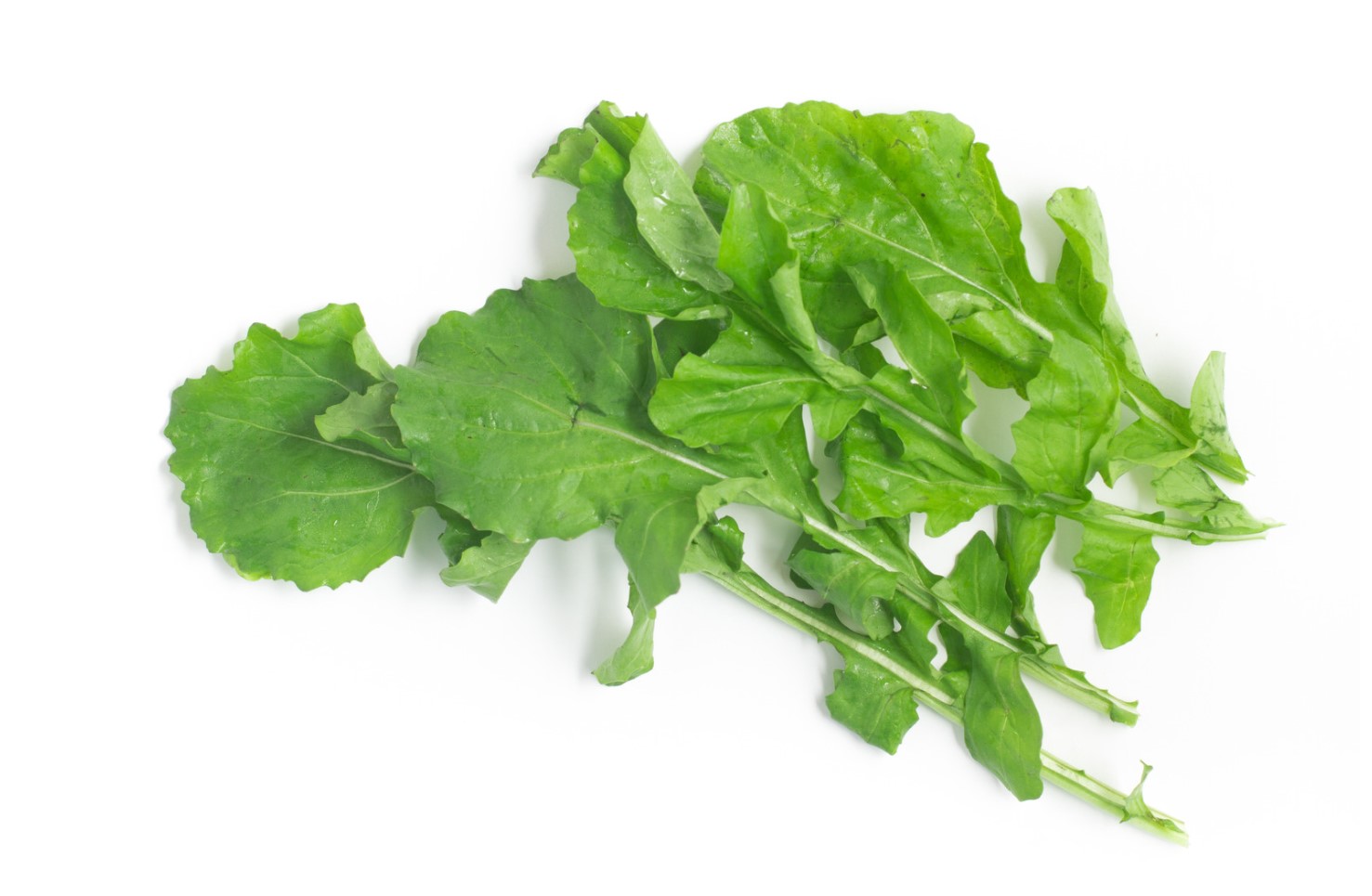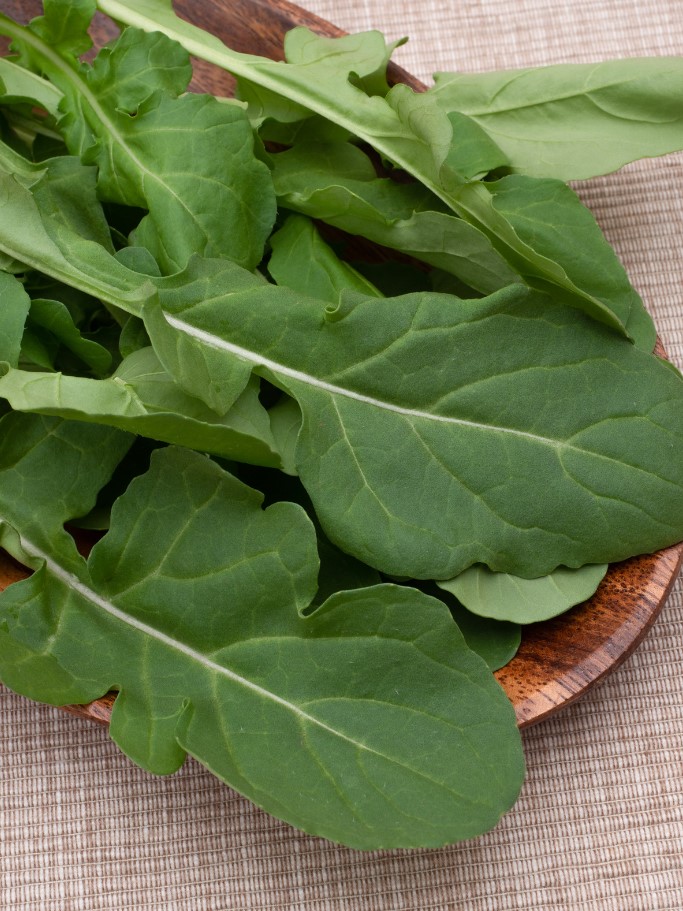Definition Of Arugula And İts Origin
Arugula is a leafy green that is enjoyed all over the world for its distinct flavor and numerous health benefits. This green is believed to originate from the Mediterranean region and has been used for centuries in various dishes. The term “arugula” is believed to have come from the Italian word “rucola”, which means “little sprout.” Arugula belongs to the Brassicaceae family, which also includes kale, broccoli, and cauliflower.

Arugula is a cruciferous vegetable that is packed with nutrients. It is a great source of vitamin K, which plays a critical role in blood clotting, bone health, and heart health. Arugula is also a good source of vitamin A, vitamin C, and folate. It is also rich in minerals such as calcium, potassium, and magnesium.
- Arugula is believed to have originated from the Mediterranean region.
- The term “arugula” comes from the Italian word “rucola.”
- Arugula belongs to the same family as kale, broccoli, and cauliflower.
- Arugula is a good source of vitamin K, vitamin A, vitamin C, and folate.
- Arugula is also rich in minerals such as calcium, potassium, and magnesium.
| Nutrient | Amount per 100g |
|---|---|
| Vitamin K | 109% |
| Vitamin A | 47% |
| Folate | 16% |
| Vitamin C | 15% |
In conclusion, arugula is a leafy green vegetable that is packed with essential nutrients. Its unique flavor adds an extra dimension to any dish, and its numerous health benefits make it a valuable addition to any diet. Whether consumed raw as part of a salad or cooked in a delicious pasta dish, arugula is versatile, delicious, and oh so good for you!

Nutritional Composition And Benefits Of Arugula
Arugula, also known as rocket or salad rocket, is a leafy green plant that belongs to the Brassicaceae family. It is native to the Mediterranean region and has been used in salads and other dishes for centuries. In recent years, arugula has gained popularity for its numerous health benefits and unique flavor.
Arugula is a low-calorie vegetable that is packed with nutrients. It is an excellent source of vitamins A and C, calcium, magnesium, and potassium. Arugula is also high in beta-carotene, which helps to protect the body against oxidative stress. Additionally, arugula contains a variety of antioxidants, including glucosinolates, which have been shown to have anti-cancer properties.
| Nutrient | Amount per 100g |
|---|---|
| Calories | 25 |
| Protein | 2.6g |
| Fat | 0.7g |
| Carbohydrate | 3.7g |
| Dietary fiber | 1.6g |
| Vitamin A | 47% daily value |
| Vitamin C | 25% daily value |
| Calcium | 16% daily value |
| Potassium | 10% daily value |
In addition to its nutritional value, arugula has several health benefits. For example, arugula may help to reduce inflammation in the body, which is linked to numerous chronic diseases, including heart disease, diabetes, and cancer. Arugula may also help to improve digestion, boost immunity, and support bone health.
- Reduces inflammation
- Improves digestion
- Boosts immunity
- Supports bone health
There are many ways to incorporate arugula into your diet, such as adding it to salads, sandwiches, and wraps. You can also use it as a topping for pizzas, pasta dishes, and soups. Arugula is a versatile ingredient that can add flavor and nutrition to a wide variety of dishes.
Overall, arugula is a nutritious and delicious leafy green that offers numerous health benefits. Whether you are looking to improve your overall health, boost your immunity, or add more flavor to your meals, arugula is a great choice. So why not try incorporating arugula into your diet today?

Arugula As A Powerful Antioxidant
Arugula is more than just a flavorful ingredient in salads and sandwiches. This superfood is loaded with antioxidants, which can offer a range of health benefits. Antioxidants prevent or reduce cell damage caused by free radicals in the body, which can lead to a variety of health problems.
- Arugula’s antioxidants help to protect the body against diseases like cancer and heart disease. It contains compounds like sulforaphane, which is known to have anti-cancer properties.
- The high levels of vitamin C in arugula are another vital antioxidant. This vitamin is essential for supporting the immune system, fighting inflammation, and maintaining healthy skin and joints.
- In addition to vitamin C, arugula also contains vitamin A, which is another powerful antioxidant. Vitamin A is essential for healthy vision, a robust immune system, and healthy skin and mucous membranes.
Aside from its antioxidant properties, arugula is also rich in other essential vitamins and minerals like folate, calcium, potassium, and iron. It’s also low in calories and high in fiber, making it an excellent addition to any weight loss diet.
If you’re looking for a way to boost your overall health and wellbeing, consider incorporating arugula into your regular diet. Whether you add it to salads, sandwiches or soups, you’ll be reaping the benefits of its powerful antioxidant properties.
Arugula As A Cancer-fighting Agent
Arugula is not just your ordinary salad green. Many people do not know that it is packed with a lot of nutrition and health benefits. One of the most compelling benefits of arugula is its potential to fight cancer. Its cancer-fighting qualities come from its high content of antioxidants, phytochemicals, and other compounds that help protect your body against cancer.
Arugula’s cancer-fighting power lies in its ability to inhibit the growth and proliferation of cancer cells. It contains many bioactive compounds that have been shown to have anti-cancer properties. For instance, a study has found that the phytochemicals in arugula help to block the activity of an enzyme that plays a critical role in cancer development. Moreover, the high level of antioxidants in arugula helps to scavenge free radicals in the body, thereby reducing the risk of oxidative damage to your cells and DNA which can lead to cancer.
- Arugula’s anticancer agents include:
- Glucosinolates
- Carotenoids
- Phenolic compounds
- Flavonoids
- Vitamin C
Moreover, arugula contains a compound called sulforaphane that inhibits the growth of cancer cells in the colon, prostate, breast, lung, and pancreatic cancer by inducing cell death (apoptosis) and preventing angiogenesis (blood vessel formation).
The verdict is clear: arugula is a cancer-fighting agent that should be included in your diet. It is an easy addition to your meals, either as a topping to your pizza or a green in your salad. You can also juice it for maximum health benefits.

Arugula And İts Antibacterial Properties
Arugula, also known as salad rocket, is a popular leafy green vegetable that adds a peppery flavor to salads and other dishes. Aside from its distinctive taste, arugula has been found to have incredible health benefits, including its antibacterial properties. Research has shown that arugula contains compounds that can effectively inhibit the growth of harmful bacteria, making it an excellent addition to your diet.
Studies have found that arugula extract can be effective against a range of bacterial strains, including E. coli and Salmonella. These bacteria are commonly found in food and can cause foodborne illnesses. By including arugula in your meals, you can lower your risk of developing such infections. The antibacterial properties of arugula are attributed to its high concentration of certain compounds, including glucosinolates and phenols.
- Glucosinolates are sulfur-containing compounds that have been found to have antimicrobial properties.
- Phenols are another group of compounds found in arugula that have antioxidant and antibacterial effects.
The antibacterial properties of arugula are not only beneficial for reducing the risk of foodborne illnesses, but they also have potential medical applications. Research has shown that arugula extract may be effective against certain antibiotic-resistant bacteria. This means that arugula could potentially be used as a natural alternative to antibiotics in the future.
| Nutrient | Amount |
|---|---|
| Calories | 25 kcal |
| Protein | 2.6 g |
| Carbohydrates | 3.7 g |
| Fiber | 1.6 g |
| Fat | 0.7 g |
| Vitamin K | 109% |
| Vitamin C | 15% |
| Vitamin A | 47% |
| Calcium | 16% |
If you want to reap the antibacterial benefits of arugula, try incorporating it into your meals in various ways. You can add it to salads, sandwiches, or use it as a garnish on top of soups. You can also blend it into smoothies or make pesto with it. With its versatile flavor and impressive health benefits, arugula is a superfood that you won’t want to miss out on.

Arugula’s Role İn Bone Health
Arugula is a leafy green vegetable that is commonly used in salads and various dishes. But did you know that this vegetable also plays a crucial role in maintaining bone health? Yes, that’s right! Arugula is a great source of various vitamins and minerals that are essential for the growth and maintenance of our bones.
Arugula is exceptionally rich in vitamin K, a nutrient that is vital for the formation of strong bones. This vitamin helps in producing osteocalcin, a protein that is necessary for bone mineralization. Consuming a cup of arugula provides you with more than 100% of your daily requirement for vitamin K, making it an excellent addition to your diet.
- Calcium: Along with vitamin K, arugula is also a rich source of calcium, which is the most essential mineral for bone health. Consuming calcium-rich foods like arugula can help in supporting bone mass and strengthening bones.
- Magnesium: Arugula is loaded with magnesium, a nutrient that is essential for calcium absorption in bones. Magnesium helps to convert vitamin D into its active form, which is responsible for regulating calcium levels in the body.
Arugula is also rich in vitamin C, another essential nutrient that plays a crucial role in bone health. Vitamin C is necessary for the production of collagen, a structural protein that is present in bones, tendons, and ligaments. It also acts as an antioxidant, protecting bones from damage caused by free radicals.
If you want to reap the benefits of arugula for your bone health, try to incorporate it into your daily diet. You can use arugula in salads, sandwiches or even make a pesto sauce using it. So go ahead and enjoy this leafy green vegetable not just for its taste but also for its incredible nutritional benefits.
Arugula As A Source Of Vitamin K And İts Benefits
Arugula is a leafy green vegetable that is known for its sharp and peppery taste. It’s packed with nutrients and provides numerous health benefits. One of the nutrients that arugula is particularly rich in is Vitamin K. This vitamin is essential for the body as it plays a central role in blood clotting, bone health, and heart health.
Vitamin K exists in two forms- K1 and K2. Arugula contains both forms, but it’s particularly rich in Vitamin K1, also known as phytonadione. This form of vitamin K is found in plant-based foods and is essential for blood clotting. Just one cup of fresh arugula provides over 100% of the recommended daily intake of Vitamin K1, making it an excellent source of this essential vitamin.
Vitamin K is vital for healthy bones as it helps the body absorb calcium, making it an essential nutrient for preventing bone loss and fractures. Studies have shown that individuals who consume high amounts of Vitamin K have a lower rate of bone loss than those who don’t get enough of this vitamin. Vitamin K also plays a role in reducing the risk of heart disease by supporting healthy blood flow and preventing the buildup of calcium in the arteries.
- Incorporating arugula into your diet is an easy way to boost your intake of Vitamin K. Add some fresh arugula leaves to your salad, sandwich or wrap, or use it as a topping for pizza or pasta dishes.
- Arugula can also be incorporated into a smoothie for an added boost of nutrients.
- Arugula is also a great source of other essential vitamins and minerals like Vitamin C, Vitamin A, and Folate, making it a nutrient-dense food that should be a part of any healthy diet.
Arugula is a versatile and nutritious vegetable that provides numerous health benefits. With its high content of Vitamin K, arugula helps support healthy bones, blood clotting, and heart health. You can easily incorporate arugula into your diet by adding it to salads, sandwiches, wraps or smoothies, making it a tasty and nutritious addition to any meal.

Arugula And İts Role İn Weight Loss
Arugula is a superfood that is not only delicious but also provides excellent health benefits. One of its benefits is its role in weight loss. Arugula is a low-calorie vegetable that is perfect for those who want to reduce their calorie intake. Additionally, arugula is rich in fiber, which helps to keep you feeling full for longer periods. Moreover, arugula contains nitrate, a compound that has been found to enhance exercise performance, helping you burn more calories and lose weight faster.
- One way to incorporate arugula into your weight loss diet is by adding it to your daily salads.
- You can also make a refreshing arugula smoothie by blending arugula, cucumber, apple, and lemon juice.
- Another idea is to use arugula as a pizza topping instead of high-calorie alternatives like cheese or processed meats.
Arugula is also a versatile ingredient that can be added to many dishes to give them a nutrition boost, as well as a unique flavor. It goes well with other greens, like spinach or kale, and pairs well with nuts, fruits, and cheese. Moreover, arugula is an excellent source of vitamin C, which helps to boost your immune system, lower your stress levels, and improve your skin health.
| Key benefits of Arugula for weight loss | How to Incorporate Arugula into Your Weight Loss Diet |
|---|---|
| Rich in fiber and low in calories | Add it to salads, smoothies, or use as a pizza topping |
| Contains nitrate, which helps to enhance exercise performance | Mix arugula with other greens or use it in sandwiches |
| Provides a unique flavor and nutrition boost to many dishes | Use arugula to make pesto or add it to pasta dishes |
In conclusion, arugula is an excellent food to include in your weight loss diet. It is low in calories, high in fiber, and contains a compound that enhances exercise performance. Plus, it is versatile and can be added to many dishes for both flavor and nutrition. So, start incorporating arugula into your meals today and enjoy its many health benefits!
Arugula’s İmpact On Heart Health
Arugula is a leafy green vegetable that has gained popularity for its unique flavor and health benefits. One of the many benefits of incorporating arugula into your diet is its positive impact on heart health. Research has shown that consuming arugula can reduce the risk of cardiovascular diseases, such as heart attacks and strokes.
Arugula is low in calories and saturated fat, making it an ideal food for those looking to maintain a healthy heart. It also contains high levels of nitrates, which are converted into nitric oxide in the body. Nitric oxide helps to improve blood flow and lower blood pressure, reducing the strain on the heart.
- Additionally, arugula is a good source of potassium, which helps to regulate heart rhythm and maintain proper fluid balance in the body.
- Arugula also contains antioxidants, such as vitamin C and beta-carotene, which have been shown to protect the heart from damage caused by free radicals.
- Fiber, another important nutrient found in arugula, can also help to improve heart health by reducing cholesterol levels in the blood.
Overall, incorporating arugula into your diet can provide a wealth of health benefits, including a healthy heart. Fortunately, arugula is a versatile ingredient that can be used in a variety of dishes, from salads to soups to pizzas. So, whether you’re looking to improve your heart health or simply enjoy the unique flavor of this leafy green, give arugula a try!

How To İncorporate Arugula İnto Your Diet
If you’re looking for a healthy addition to your diet, look no further than arugula. This leafy green is packed with nutrients and has a slightly peppery taste that adds a kick to any dish. But how can you incorporate it into your diet?
1. Add it to salads. Arugula makes a great addition to any salad. Its peppery flavor pairs well with other greens, such as spinach or kale. Top your salad with some grilled chicken or shrimp for a filling meal.
2. Pile it on your pizza. Instead of using traditional pizza toppings, try adding some arugula to your pizza. After the pizza is cooked, pile the arugula on top for a fresh and nutritious addition.
3. Use it as a sandwich topping. Tired of the same old sandwich? Add some arugula for a fresh take. It pairs well with chicken, turkey, or roast beef.
- 4. Make pesto. If you’re a fan of pesto, try making it with arugula instead of basil. It adds a unique flavor to the classic sauce.
- 5. Blend it into smoothies. Yes, arugula can even be added to smoothies for an extra dose of vitamins and minerals. Mix it with some pineapple, banana, and almond milk for a delicious and nutritious smoothie.
There are many ways to incorporate arugula into your diet. Experiment with different recipes and find what works best for you. Your taste buds and your body will thank you for it!
Growing Arugula İn Your Garden
If you are a green thumb and want to add some variety to your home garden, consider growing arugula. This leafy green vegetable is not only delicious but also easy to grow in your backyard.
Arugula belongs to the Brassicaceae family and comes in different varieties, including wild arugula, standard arugula, and the most common variety, Italian or Mediterranean arugula. It grows best in cooler temperatures and can be planted in spring or fall.
- To start growing arugula, choose a sunny spot in your garden and prepare the soil by loosening it to a depth of at least 8 inches.
- Plant the arugula seeds about ¼ inch deep and 1 inch apart.
- Water the seeds thoroughly, but avoid overwatering as it can cause the seeds to rot.
- As the arugula grows, thin out the seedlings, leaving a space of 6 to 8 inches between each plant.
Arugula is a fast-growing plant and can be harvested within 3 to 4 weeks after planting. You can choose to harvest the mature leaves or younger leaves, depending on your preference. They can be used fresh in salads, sandwiches, or as a pizza topping for a peppery flavor.
| Nutrition Information | Amount per 100g |
|---|---|
| Calories | 25 |
| Protein | 2.6g |
| Carbohydrates | 3.7g |
| Fiber | 1.6g |
| Fat | 0.7g |
| Vitamin C | 15% |
| Vitamin K | 90% |
Arugula is also a nutrient-dense vegetable that is low in calories and high in vitamins and minerals. It contains significant amounts of vitamin C, vitamin K, folate, and calcium. Eating arugula regularly can help boost your immune system, reduce inflammation, and support bone health.
If you are new to gardening, growing arugula is an excellent starting point. It is easy to grow, requires minimal care, and adds a unique flavor to your meals. With a little effort, you can enjoy fresh and nutritious arugula straight from your backyard.

Arugula’s Culinary Uses And Recipes
Arugula is a leafy green that adds a peppery flavor to dishes, making it a popular ingredient in many cuisines around the world. Not only is it delicious, but it also has numerous health benefits, from being a good source of vitamins and minerals to having antioxidant and antibacterial properties. In this blog post, we’ll explore the various culinary uses of arugula and share some tasty recipes you can try at home.
Culinary Uses: Arugula can be used as a topping, a base for a salad, and even as a garnish. It pairs well with foods such as tomatoes, nuts, and cheese. One popular way to use arugula is to make a pesto sauce. Simply blend arugula, garlic, pine nuts, Parmesan cheese, and olive oil together until smooth. It can be used as a topping for pasta or spread on bread. Arugula can also be added to soups and stews for added flavor.
- Arugula Pesto Pizza
- Arugula Salad with Goat Cheese and Walnuts
- Fried Egg and Arugula Sandwich
Recipes: Here are three recipes that incorporate arugula:
- Arugula Pesto Pizza: Spread the arugula pesto sauce onto a premade pizza crust. Add sliced tomatoes, mozzarella cheese, and red pepper flakes. Bake at 425 degrees for 10-12 minutes until the cheese is melted and the crust is crispy. Top with fresh arugula and serve.
- Arugula Salad with Goat Cheese and Walnuts: Toss arugula with olive oil and balsamic vinegar. Add crumbled goat cheese, chopped walnuts, and sliced strawberries. Season with salt and pepper to taste.
- Fried Egg and Arugula Sandwich: Toast bread and spread with mayonnaise. Add a fried egg, crispy bacon, and a handful of arugula. Top with the other slice of bread and serve.
Arugula is a versatile ingredient that can be used in a variety of dishes, from salads to sandwiches to pizzas. Not only does it add a unique flavor to dishes, but it also has numerous health benefits. Incorporating arugula into your diet is easy and delicious with these recipes!
Popular Arugula Dishes From Different Cuisines
Arugula, also known as rocket or roquette, is a leafy green vegetable that is popular in many different cuisines around the world. This peppery-tasting green is a great addition to salads, sandwiches, pizzas, pasta, and many other dishes. But what are some of the most popular arugula dishes from different cuisines?
In Italian cuisine, arugula is best known as an ingredient in salad. Insalata di rucola is a classic arugula salad that’s simple to make: just toss the arugula with olive oil, lemon juice, and shaved Parmesan cheese. Another popular Italian dish featuring arugula is pizza. Pizza con rucola e prosciutto is a thin-crust pizza topped with arugula leaves, prosciutto, and shaved Parmesan.
- In French cuisine, arugula is often used in quiches, tarts, and soups. Salade de Roquette is a salad made with arugula, walnuts, and goat cheese. It’s dressed with a light vinaigrette made with Dijon mustard, white wine vinegar, and olive oil.
- In Indian cuisine, arugula is used in a variety of dishes, including salads, curries, and sandwiches. One popular Indian dish featuring arugula is the Masoor Dal Arugula Salad, which is made with lentils, arugula, onions, and spices.
- In Middle Eastern cuisine, arugula is often used in meze dishes, like hummus and baba ghanoush. It’s also used in a traditional salad called Fattoush which features crispy pita chips, sumac-spiced onions, and a tangy lemon dressing.
If you’re looking for some new ways to incorporate arugula into your diet, try some of these popular arugula dishes from around the world. Whether you’re a fan of Italian, French, Indian, or Middle Eastern cuisine, there’s sure to be an arugula dish that appeals to your taste buds.
Arugula’s Sustainability And Environmental İmpact
Arugula is not only a food, but it also has a significant impact on the environment. The sustainability and environmental impact of arugula are often overlooked by most people. Understanding the impact of arugula cultivation and consumption can play a significant role in promoting sustainable agriculture and protecting the environment.
Arugula’s sustainability begins with its cultivation. Arugula is a relatively easy plant to grow, requiring minimal care and attention. Unlike other crops, arugula grows quickly, and it is a cool-season crop that requires little water, making it a sustainable option for agriculture. Additionally, arugula is a perfect option for organic farming, as it is naturally resistant to pests and diseases.
In terms of environmental impact, arugula has a minimal footprint. The water used for arugula irrigation is significantly less compared to other crops. Moreover, arugula is a short-lived crop; it requires less energy to produce and transport. When it comes to packaging, the green leaves can be easily gathered together, avoiding the need for excess packaging, which ultimately helps reduce waste.
| Arugula’s Sustainability: | Environmental Impact: |
|---|---|
| Easy plant to grow | Minimal water usage |
| Short-lived crop | Less energy expenditure in production and transportation |
| Naturally resistant to pests and diseases | Minimal packaging and waste |
When shifting towards a more sustainable lifestyle, incorporating arugula into your diet is an easy and delicious way to do so. Arugula is a versatile ingredient that can be used in various dishes, providing a quick and easy source of vital nutrients. By choosing to consume arugula in its various forms, you’re supporting sustainability and positively contributing to the environment.
Arugula’s sustainability positively impacts our environment, and its cultivation and consumption can play a significant role in promoting sustainable farming practices. So, next time you prepare a salad or pasta dish, consider including fresh arugula and support sustainable agriculture.
The Future Of Arugula Agriculture And Consumption
Arugula, also known as rocket, is a leafy green vegetable that has been gaining popularity worldwide due to its unique taste and numerous health benefits. This plant is native to the Mediterranean region, where it has been cultivated for centuries. However, it is now being grown in many other parts of the world as well, and its popularity is expected to continue to grow in the future as more people discover its benefits.
One reason for this growth in popularity is the increasing demand for locally grown, sustainable foods. Arugula is one of the easiest vegetables to grow, and it thrives in a variety of growing conditions. This makes it an ideal crop for small-scale farmers and urban gardeners who are interested in producing their own food. As more people turn to locally grown produce for its freshness and flavor, arugula is likely to become an increasingly important crop in many regions of the world.
Another reason for arugula’s increasing popularity is its health benefits. This leafy green is rich in vitamins, minerals, and antioxidants, and it is believed to have numerous health benefits, including reducing the risk of cancer, heart disease, and osteoporosis. As more people become aware of these benefits, they are likely to seek out arugula as a healthy addition to their diets.
| Nutrient | Amount per 100g |
|---|---|
| Calories | 25 |
| Protein | 2.6g |
| Fat | 0.7g |
| Carbohydrates | 3.7g |
| Fiber | 1.6g |
| Sugar | 2.1g |
As the demand for arugula increases, farmers and food producers are likely to develop new ways of growing, harvesting, and processing this crop. One area of opportunity is in the development of new arugula varieties that are more resistant to pests and diseases and that can be grown in a wider range of climates. Another area of opportunity is in the development of new arugula-based products, such as arugula pesto or arugula chips, that can be sold in grocery stores and restaurants.
- Arugula has a bright, peppery flavor that pairs well with a variety of other foods
- It can be used fresh in salads, sandwiches, and pizzas, or cooked in soups, pastas, and stir-fries
- Arugula can be blended into smoothies or juices for a nutrient-packed drink
Overall, the future of arugula agriculture and consumption looks bright. As more people discover the unique taste and health benefits of this leafy green, demand is likely to increase, leading to new opportunities for farmers and producers around the world. Whether you grow your own arugula in your backyard or enjoy it in a restaurant, this versatile vegetable is sure to be a favorite for years to come.